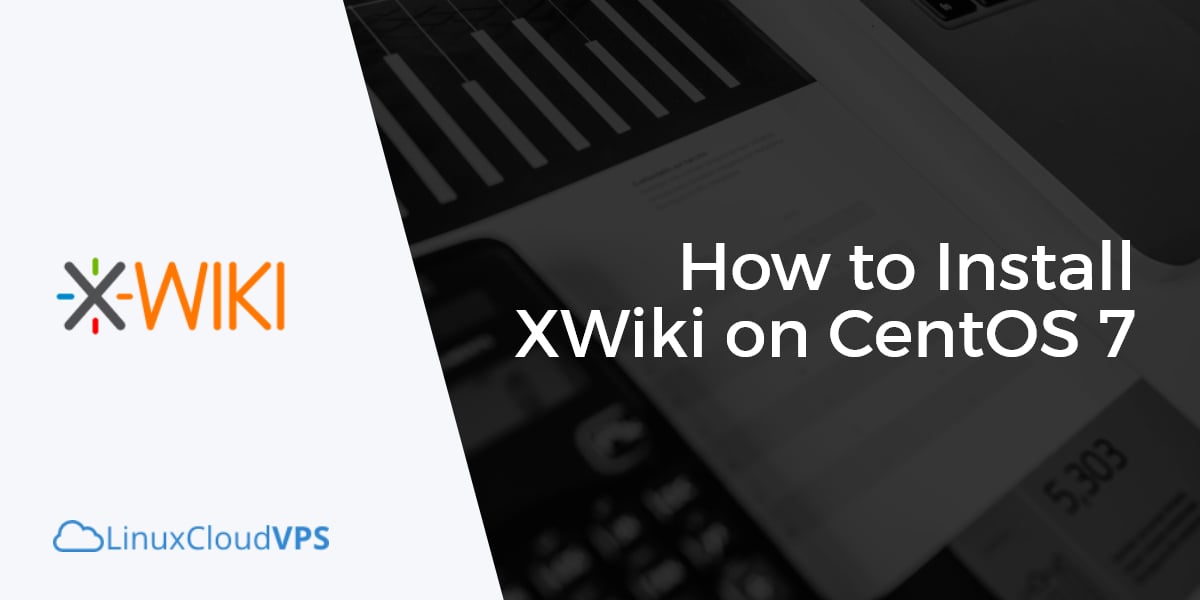XWiki is an open-source, enterprise-level wiki platform written in Java. It’s one of the most popular and most capable open source wikis out there. Some of its useful features include WYSIWYG editing, OpenDocument based document import/export, semantic annotations and tagging, and advanced permissions management. The large and knowledgeable community is always available for help and they keep updating and improving the wiki software. You can check their official playground (demo) to learn more about the features that XWiki offers.
This tutorial is written and tested for a CentOS 7 Cloud Server
Log in to your CentOS 7 VPS via SSH as user root
ssh root@IP_Address
And make sure that all installed packages are up to date
yum -y update
Install MySQL database server
yum -y install mysql
Start the database server and enable it to start at system boot
systemctl start mysql systemctl enable mysql
and create a new MySQL and user for XWiki
mysql -u root -p mysql> CREATE DATABASE xwiki DEFAULT CHARACTER SET utf8; mysql> GRANT ALL ON xwiki.* TO 'xwikiuser'@'localhost' IDENTIFIED BY 'PASSWORD'; mysql> FLUSH PRIVILEGES; mysql> exit
XWiki is Java based platform, so we have to install java on the VPS.
yum -y install java
Check if it is successfully installed with the following command
java -version openjdk version "1.8.0_111" OpenJDK Runtime Environment (build 1.8.0_111-b15) OpenJDK 64-Bit Server VM (build 25.111-b15, mixed mode)
Install Tomcat
yum -y install tomcat
Install JDBC driver for MySQL
yum -y install mysql-connector-java
Copy the MySQL connector file to Tomcat’s ‘lib’ directory
cp /usr/share/java/mysql-connector-java.jar /usr/share/tomcat/lib/
Once Tomcat is installed on your server, change the current working directory to the webapps directory and download XWiki
cd /usr/share/tomcat/webapps wget http://download.forge.ow2.org/xwiki/xwiki-enterprise-web-8.4.3.war
rename the war file to something simpler
mv xwiki-enterprise-web-8.4.3.war xwiki.war
Restart Tomcat to deploy the downloaded XWiki war file and enable it to start at boot time
systemctl restart tomcat systemctl enable tomcat
Now, open the ‘hibernate.cfg.xml’ file with a text editor and comment out the whole ‘Configuration for the default database’ part and uncomment the ‘MySQL configuration’ part. It should look like this:
nano /usr/share/tomcat/webapps/xwiki/WEB-INF/hibernate.cfg.xml <!-- MySQL configuration. Uncomment if you want to use MySQL and comment out other database configurations. Notes: - if you want the main wiki database to be different than "xwiki" you will also have to set the property xwiki.db in xwiki.cfg file --> <property name="connection.url">jdbc:mysql://localhost/xwiki?useSSL=false</property> <property name="connection.username">xwikiuser</property> <property name="connection.password">PASSWORD</property> <property name="connection.driver_class">com.mysql.jdbc.Driver</property> <property name="dialect">org.hibernate.dialect.MySQL5InnoDBDialect</property> <property name="dbcp.poolPreparedStatements">true</property> <property name="dbcp.maxOpenPreparedStatements">20</property> <mapping resource="xwiki.hbm.xml"/> <mapping resource="feeds.hbm.xml"/> <mapping resource="activitystream.hbm.xml"/> <mapping resource="instance.hbm.xml"/> <mapping resource="mailsender.hbm.xml"/>
Don’t forget to change the necessary information for the MySQL database.
Save the changes and restart Tomcat again for the changes to take effect.
systemctl restart tomcat
With this step, the installation of XWiki on a CentOS 7 VPS is completed. Access the XWiki installation at http://yourdomain.com:8080/xwiki, create your administrative user and you can start creating your own wiki website.
Of course, you don’t have to do any of this if you use one of our Linux Cloud Hosting services, in which case you can simply ask our expert Linux admins to install XWiki for you. They are available 24×7 and will take care of your request immediately.
PS. If you liked this post please share it with your friends on the social networks using the buttons on the left or simply leave a reply below. Thanks.
